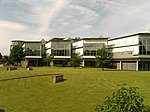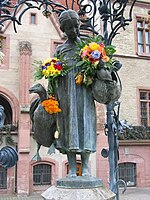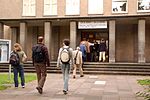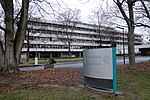University of Göttingen

The University of Göttingen, officially the Georg August University of Göttingen, (German: Georg-August-Universität Göttingen, known informally as Georgia Augusta) is a public research university in the city of Göttingen, Germany. Founded in 1734 by George II, King of Great Britain and Elector of Hanover, and starting classes in 1737, the Georgia Augusta was conceived to promote the ideals of the Enlightenment. It is the oldest university in the state of Lower Saxony and the largest in student enrollment, which stands at around 31,600. Home to many noted figures, it represents one of Germany's historic and traditional institutions. According to an official exhibition held by the University of Göttingen in 2002, 44 Nobel Prize winners had been affiliated with the University of Göttingen as alumni, faculty members or researchers by that year alone. The University of Göttingen was previously supported by the German Universities Excellence Initiative, holds memberships to the U15 Group of major German research universities and to the Coimbra Group of major European research universities. Furthermore, the university maintains strong connections with major research institutes based in Göttingen, such as those of the Max Planck Society and the Leibniz Association. With approximately 9 million media units, the Göttingen State and University Library ranks among the largest libraries in Germany.
Excerpt from the Wikipedia article University of Göttingen (License: CC BY-SA 3.0, Authors, Images).University of Göttingen
Platz der Göttinger Sieben, Göttingen Nordstadt
Geographical coordinates (GPS) Address Nearby Places Show on map
Geographical coordinates (GPS)
| Latitude | Longitude |
|---|---|
| N 51.541944444444 ° | E 9.9344444444444 ° |
Address
Platz der Göttinger Sieben 4
37073 Göttingen, Nordstadt
Lower Saxony, Germany
Open on Google Maps











